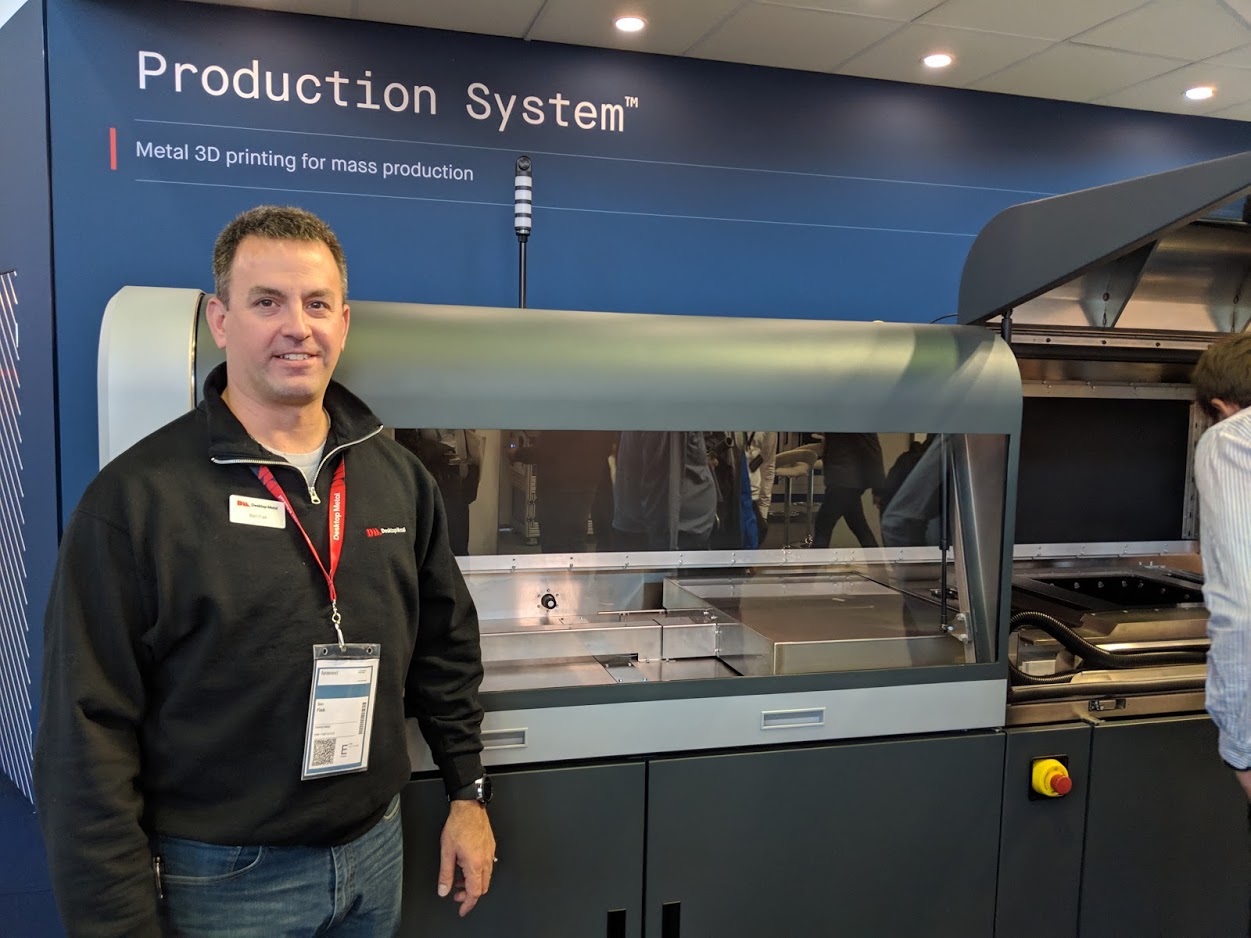![Ben Fisk, Senior Product Manager, Desktop Metal, at formnext 2018 [Image: Fabbaloo]](https://fabbaloo.com/wp-content/uploads/2020/05/IMG_20181114_151604_img_5eb0a1cdceb69.jpg)
Desktop Metal is taking advantage of its technology to go bigger, better, and faster for production 3D printing.
Ben Fisk, Senior Product Manager, shared the story when we caught up at the recent formnext, as Single Pass Jetting (Desktop Metal’s proprietary SPJ technology in its Production System) is gearing up for first deliveries and going toward a bigger build volume.
We’ve been looking forward to the promising Production System for some time as the company has allowed ever closer views of the technology as shipping looms nearer. The first generations will be shipping to Desktop Metal’s Pioneer customers early next year, starting with the first installation for a Fortune 500 company, Fisk noted. The scale up will be available about a year later “for customers who want more build rates,” though he acknowledged that “some will stay with the smaller original that fits their production needs.”
“Taking advantage of SPJ technology, we’re going from a 330mm cube to a 750mm box,” Fisk explained of the sizing up. “We’re extending in X by 2X, and more than doubling build volume, taking advantage of constant speed printing. We wanted to see what speeds we could achieve if we maximized build volume — it didn’t change how fast we actually print, and we were left with a little room for growth, so scaling up with a more efficient design.”
The new build volume is 225% larger at 750 x 330 x 250 mm, and the machine is now able to print 12,000 cubic cm per hour — that is, more than 60kg of metal parts hourly. With 32,768 piezo inkjet nozzles, the system can print with a variety of metal materials at a 3-billion-drop-per-second rate. It also features an industrial inert environment with gas recycling and solvent recovery.
![The full, larger build volume of the Production System [Image: Fabbaloo]](https://fabbaloo.com/wp-content/uploads/2020/05/IMG_20181114_151645_img_5eb0a1ce7b406.jpg)
Describing the scale up as “the biggest thing we’ve done,” Fisk also looked to other improvements in process developments, which have involved close work with their customers and internal teams.
“When you’re making 40,000 parts, they have to be the same. It has to be repeatable. We’re removing variability in process with fine tuning,” he said.
The parts on show near the on-floor Production System showcased different benefits of mass part production possible in a booth-museum display of four tables. Fisk took me on a walking tour of the parts, pointing to what made each noteworthy.
One table held identical gears, highlighting precision and repeatability with unique serial numbers on each for traceability. Another table showed mass customization on a mass production scale as the build volume “lets you stack the heck out of parts with complete nesting like SLS with no supports to get in the way.” At the next table, tiny hinges like those used in eyeglasses showed off consolidated assembly with a print-in-place movable assembly structure that included the pin in the printed hinge. The last table held spauger bits for Milwaukee Tool to show part efficiency and streamlining, bringing a 20-step manufacturing process down to a 4-step process and 3D printing up to 1,400 spauger bits in a single four-hour build.
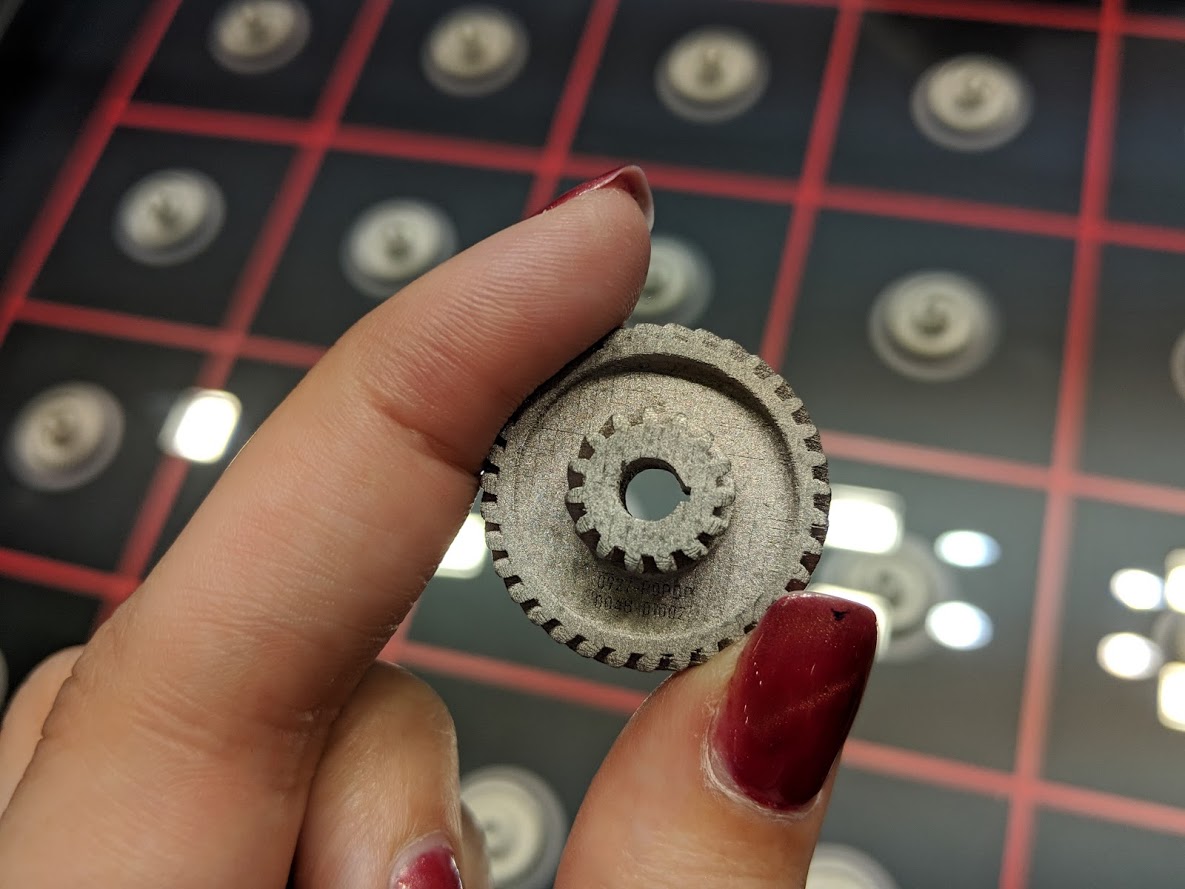
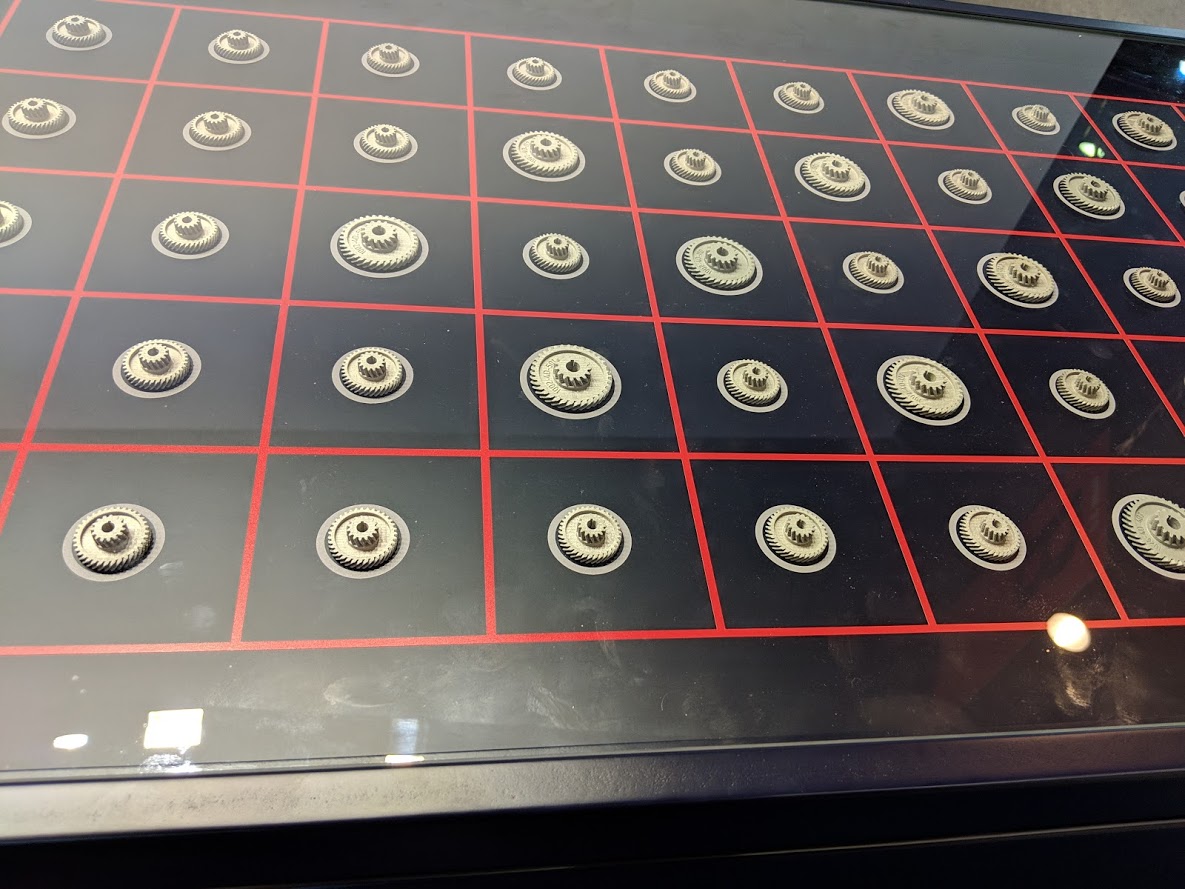
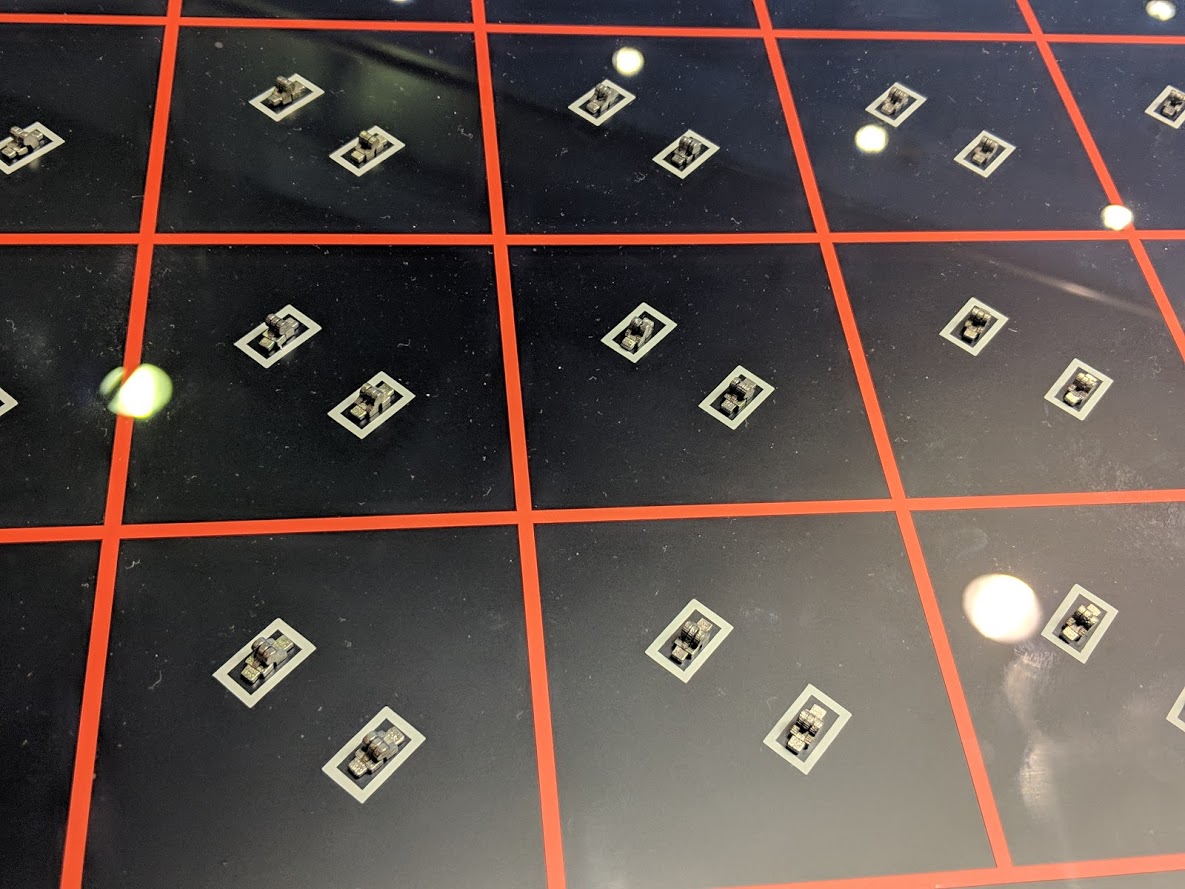
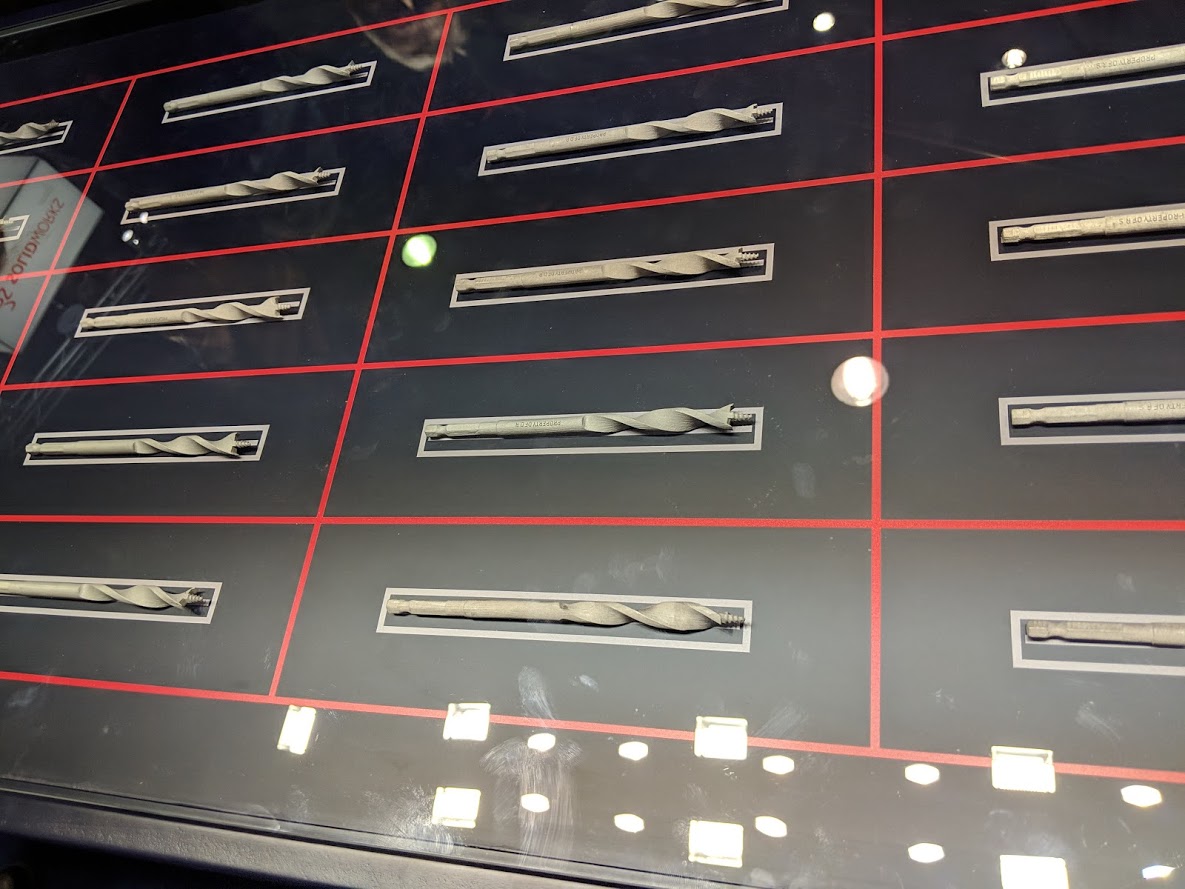
“Think of cell phone-type manufacturers,” Fisk said as we looked over the table of tiny hinges. “I didn’t fathom the quantities at first. One cell phone manufacturer needs 300 million parts per year for just one phone model; they now need dozens and dozens of machines to make them. But with four printers they can make 22,000 hinges per print in less than five hours. Scale that up to 24/7 operations and that’s close to 100,000 hinges per day. They can create new designs quickly.”
All of the pieces displayed at formnext had been 3D printed within the last two months, Fisk noted.
With the first Production Systems set to hit the market relatively soon, we’ll be looking forward to hearing how they perform in the real world in initial installations.
Via Desktop Metal

